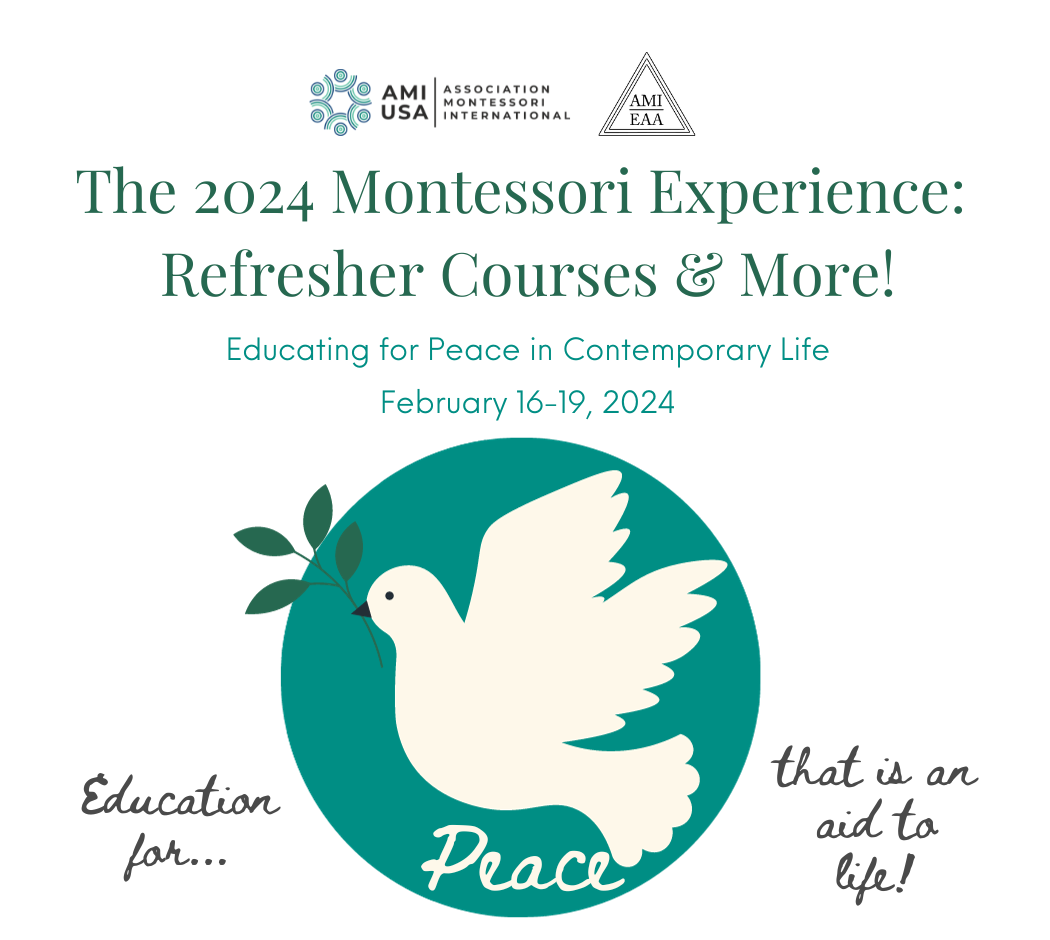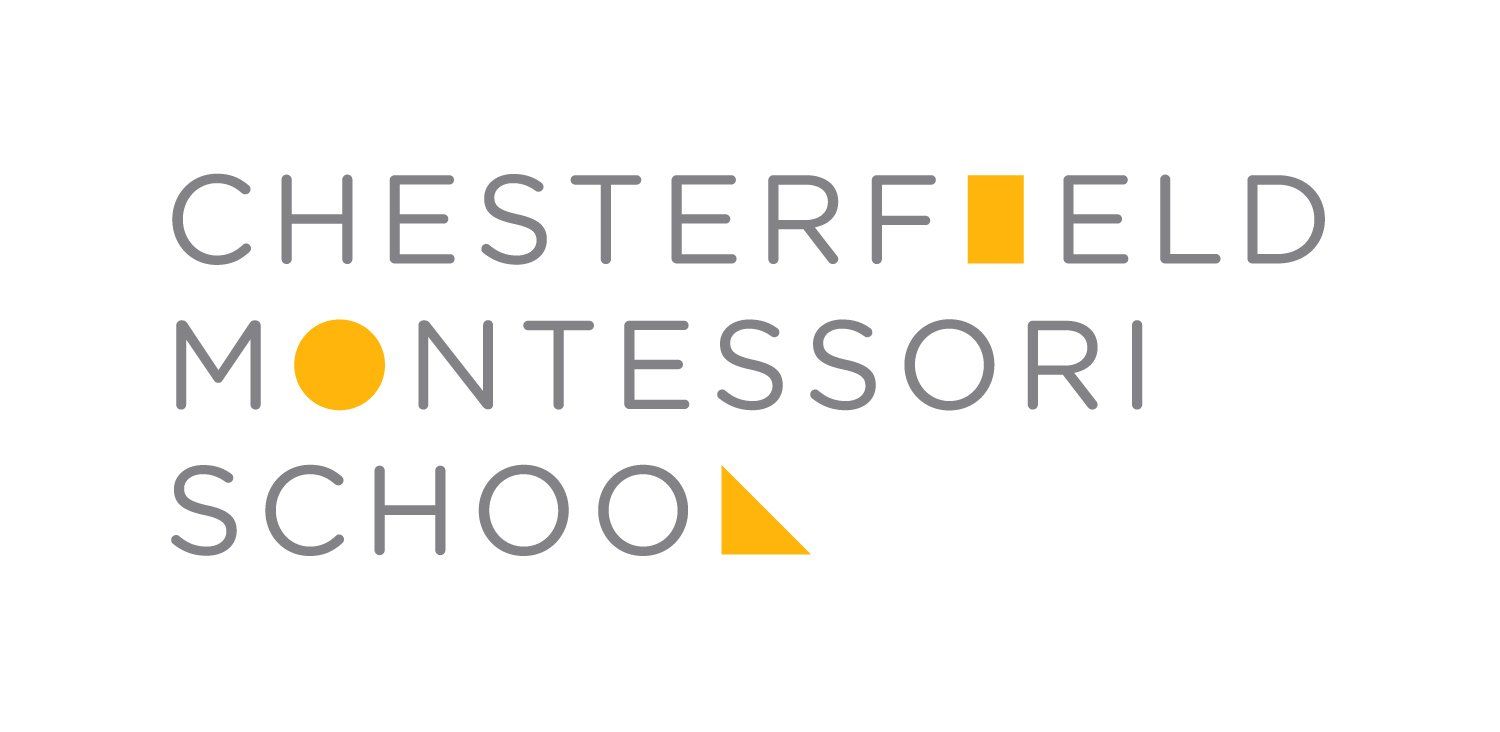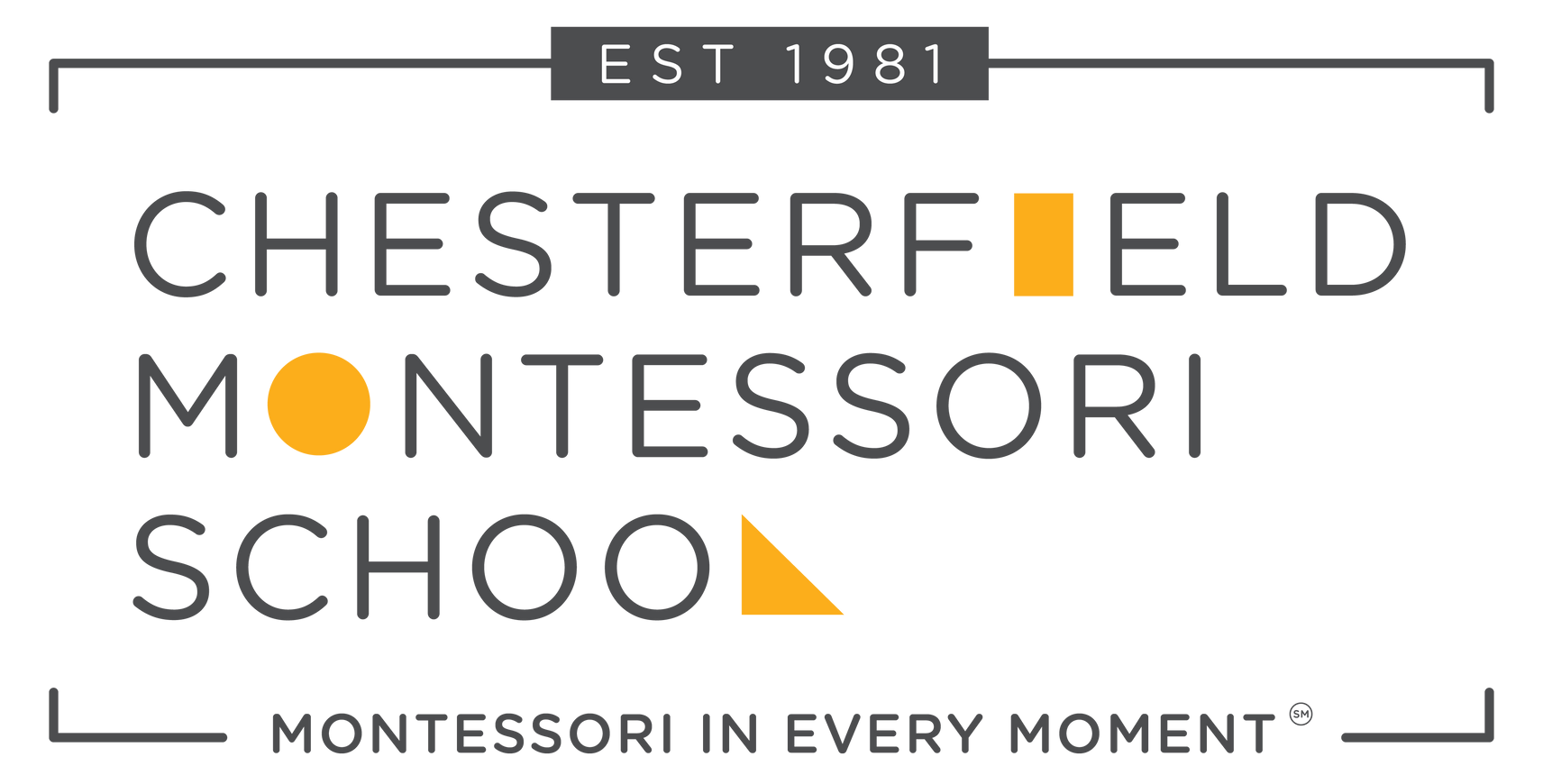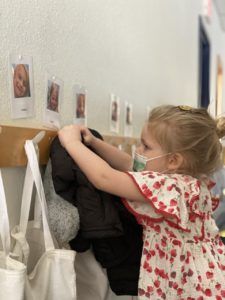
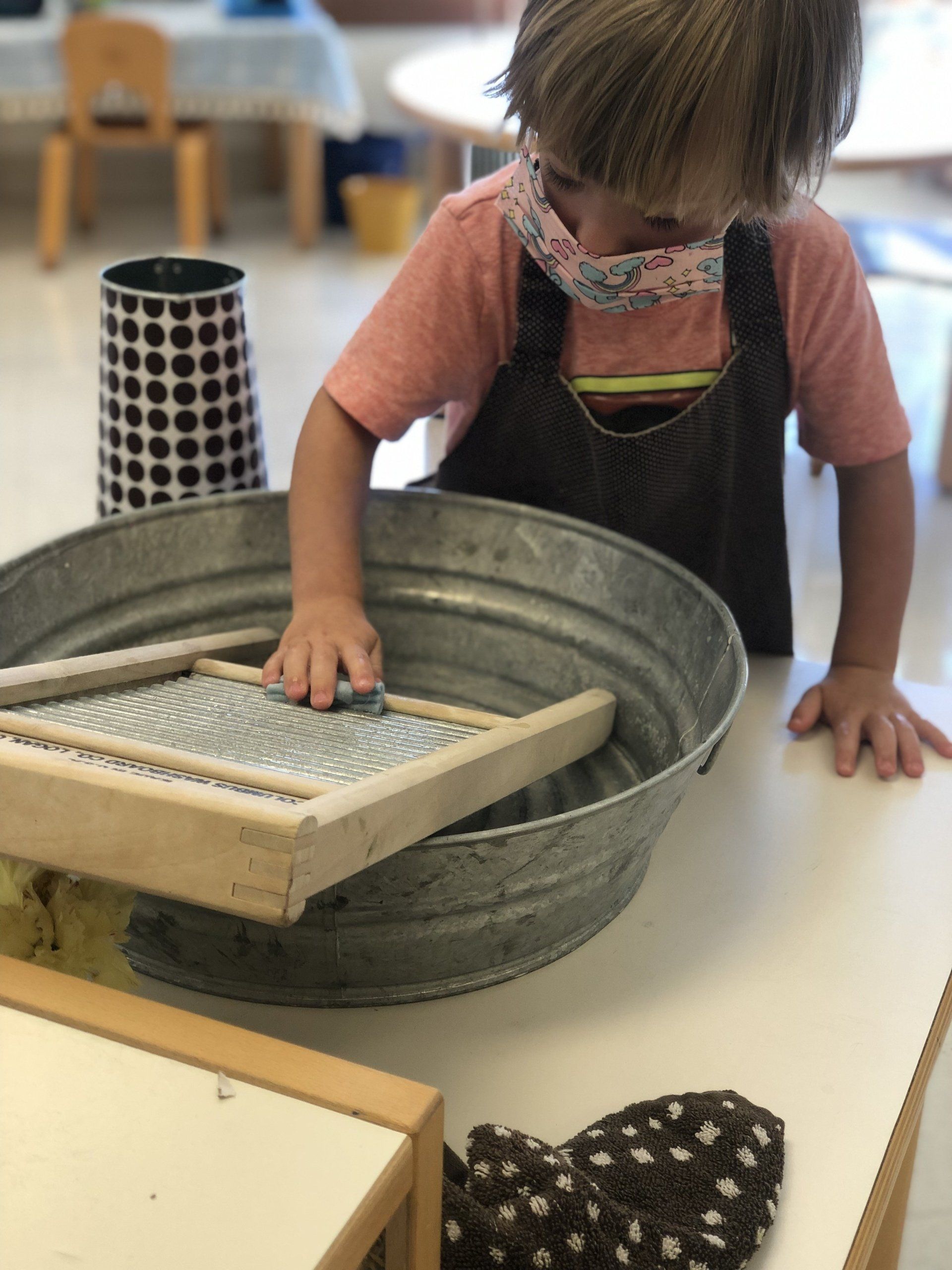
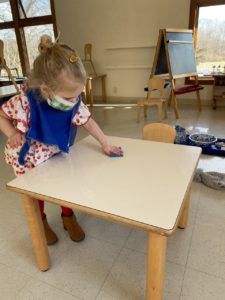
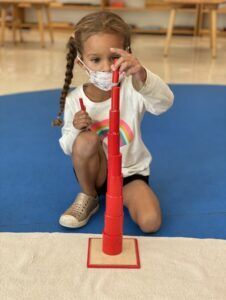
An environment is the context of our life, the context in which we live, and every environment which we’re exposed to plays a role in our development. Our environment is not only made up of the physical setting but also everything and everyone within it.
A prepared environment is a place filled with materials and furniture that are particular to a specific plane/subplane of development, as well as a prepared adult. The child’s development is kept at the center of the prepared environment, and we are always asking ourselves how to best meet the needs of the child so they can active their human tendencies.
A lot of consideration goes in to preparing a Montessori environment because it needs to be developmentally appropriate. It needs to support the child’s sensitive periods, and must be safe and secure for the child. The environment should also be aesthetically pleasing, rather than over-stimulating. Most environments will have artwork at the child’s height and minimal wall-hangings around the classroom. A successful environment aids independence, and the child should be attracted to the way the materials are set up to make their own decision on which material to use.
Also, the prepared environment needs to be functional and purposeful. Child sized furniture and materials in the prepared environment are essential to aid independence. You will notice that there is order, and every material in the environment has it’s designated space. The environment should be clean and inviting for the children. The Guide has placed the shelves in such a way that children are free to move around the classroom, but the shelves are set up so that children must walk and be aware of their movements.
Receiving and Bathroom Areas
Your child’s classroom isn’t the only prepared environment available to them. Every Montessori setting has a receiving area where students keep their belongings. When children arrive at school, they place their coats or bags on their own hook. There is a space for them to store their lunchbox if needed and a place for their indoor shoes that they change into when they arrive. The environment sometimes includes a mirror for them to inspect themselves if they wish to fix their mask or look in the mirror to zip up their coat.
Another prepared environment is the bathroom area, which aids in functional independence. There are child sized toilets and sinks. If there is not a child sized toilet or sink then there are step stools for the children to use. Within the bathroom there is also a designated space for your child’s extra clothes and belongings they may need.
Room and Furnishings
Within the classroom environment, the room and furnishings are created to support the children. Everything in the classroom is child sized: counters, tables, chairs, shelves, dishwasher, sink, and artwork. The tables and chairs are lightweight enough for the children to move but substantial enough to anchor.
The ideal Montessori environment has a large area rug and a hard floor. There is a water source in every Montessori environment, even if there is not a sink available. The windows in the room are usually low and allow natural light to come through, and it is common to have classrooms use natural lighting instead of fluorescent lighting. All wood furniture is preferable and the shelves are low and open, easily accessible to the children. Most classrooms have many plants for plant care, but are also reflective of the the type of leaves in the Botany Cabinet that is in the classroom. The aesthetics of the room are important, but function is of paramount importance.
Four Areas of the Montessori Environment
The Practical life Area supports the development of concentration, will; capacity to make a choice. In this area the child develops functional independence and finds peace and joy in this work. The child develops hand strength and equilibrium (control and coordination of movement). This area also introduces logical sequencing with its materials. While doing practical life work, the child is learning and practicing respect for themselves and their environment. They are feeling sense of mastery and belonging. The result of this area is normalization within the classroom.
The Sensorial Area is all about the refinement of senses. This area also develops the mathematical mind. The sensorial materials encourage repetition, work, and perfection. While working with these materials the child makes order out of the “great chaos” of their mind. Sensorial materials aid the development of intelligence; ability to reason and problem solve. This area of the environment allows the child to understand how people fulfill fundamental needs, and develop their own cultural identities. For example, the Puzzle Maps material is considered sensorial, and it opens the door to not only geography but cultural exploration.
This material is part of the phonogram folders to help with all aspects of language.
The Language Area develops tools of communication, self confidence and a sense of belonging. The children explore writing and reading in this area. For example, the phonogram folders are used extensively to help familiarize the children with ways key sounds are written in the English language. This area is foundational to other curricular areas and all of life, and it helps develop tools for self expression.
The Mathematics Area allows for concrete exploration of abstract mathematical concepts. The child is internalizing abstract concepts-arriving at abstractions. This area gives the child tools to explore human invention.
These teen beads give the child a sensorial impression of the teen numbers.
Finally, there are some ground rules of every Prepared Environment:
- The environment belongs to the children. They are the owners.
- Respect for one’s self, the rights of others, and the environment.
- One activity/material at a time.
- Presentation before independent practice.
- Prepare the material so it is ready for the next person, in the same place.
- Collaborate through mutual consent. (Conversely, wait for unavailable materials.)
Overall, the adults in your child’s environment here at CMS have done a tremendous amount of work preparing your child’s environment. If you have not done so, set up a visit to come in and observe your child in their prepared environment and see how they are set up for success once they come in our doors!
